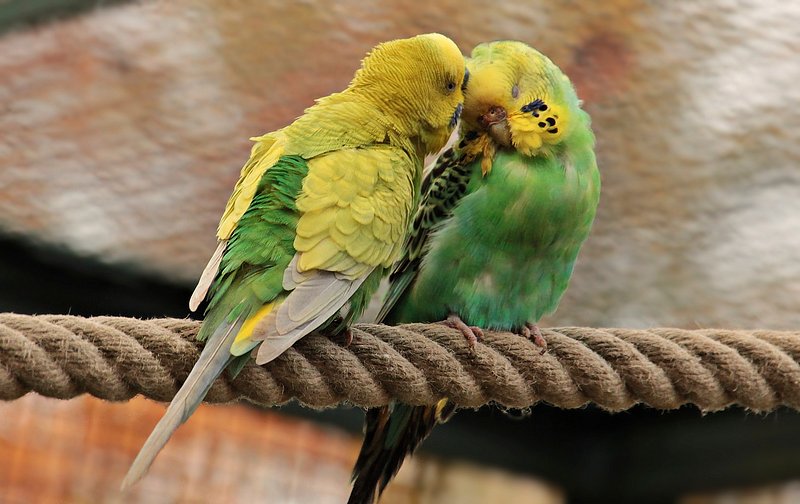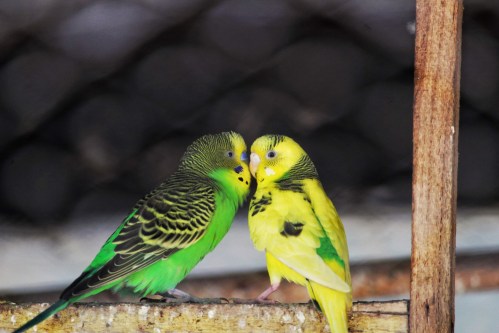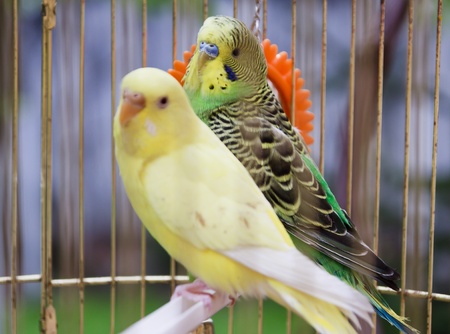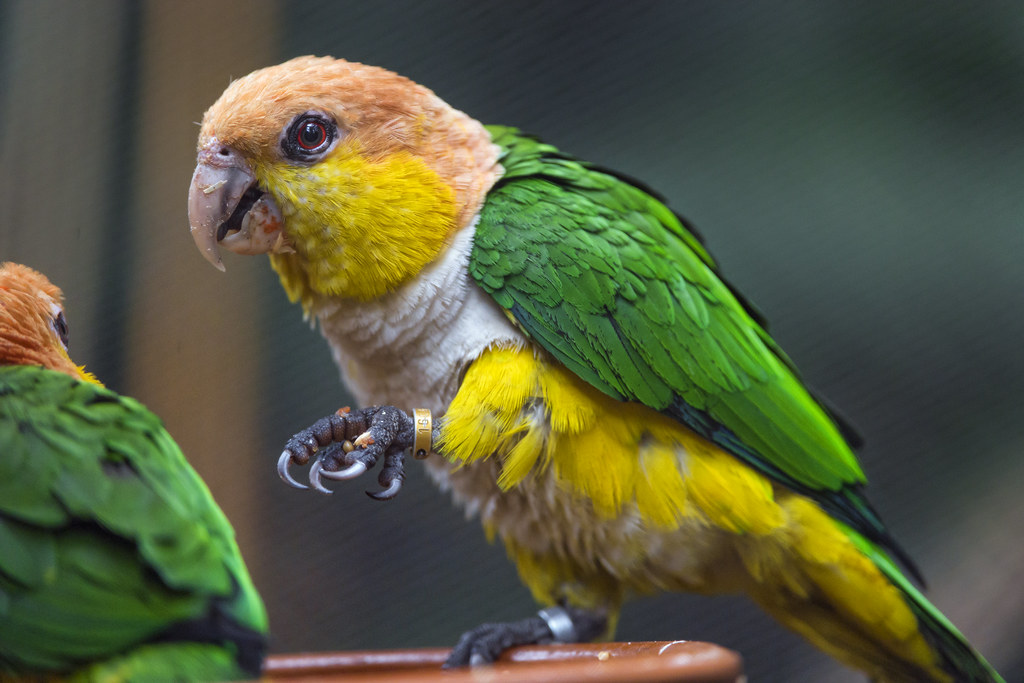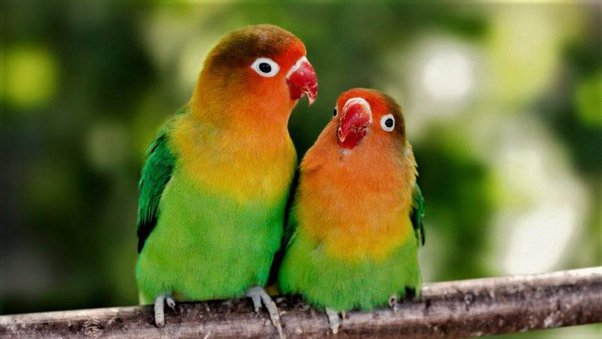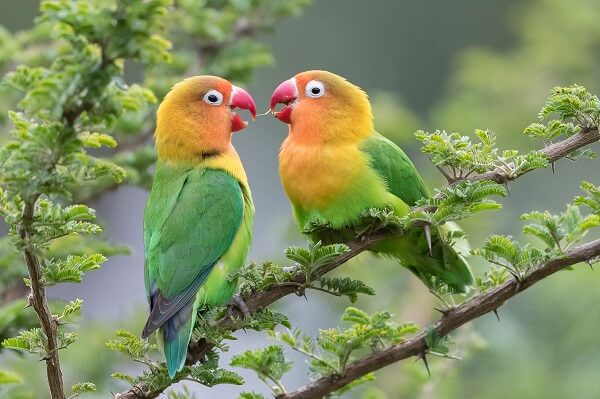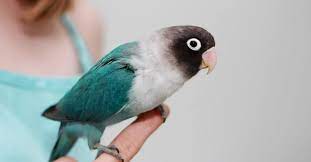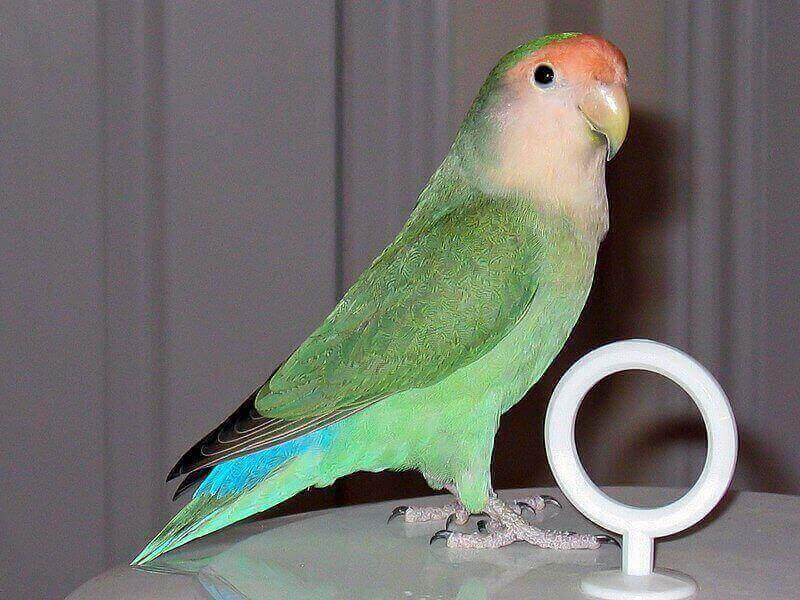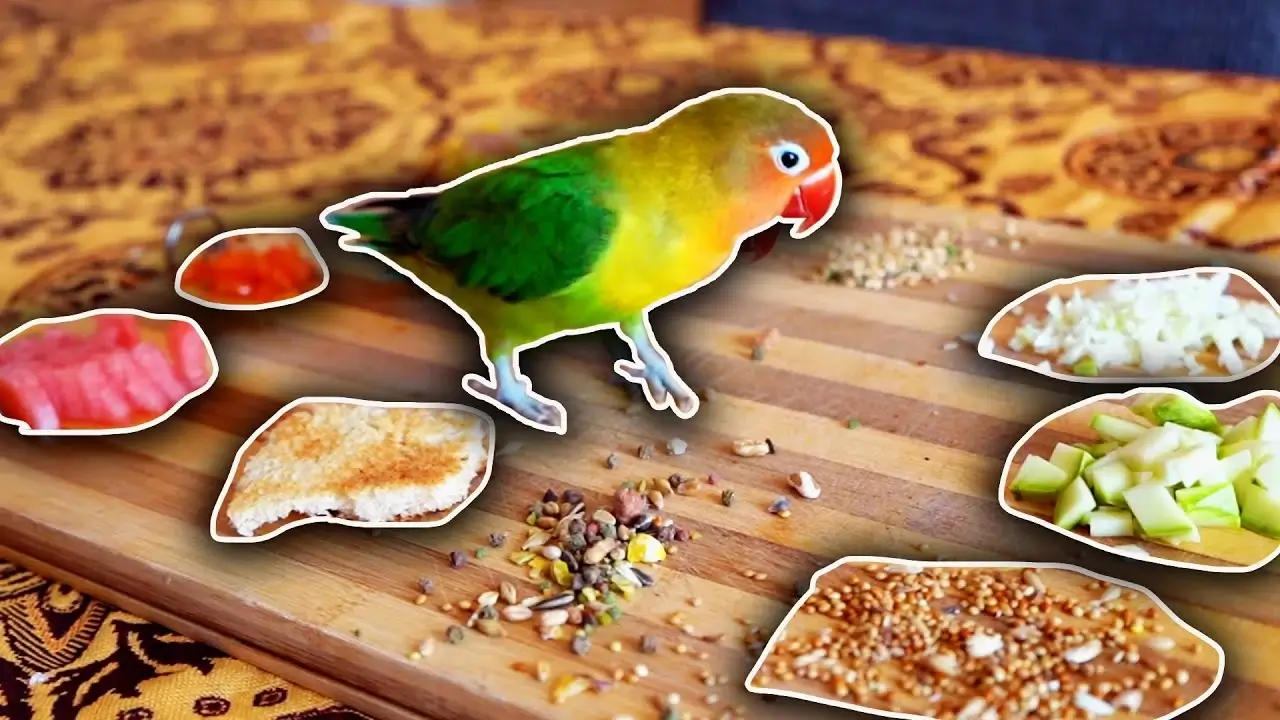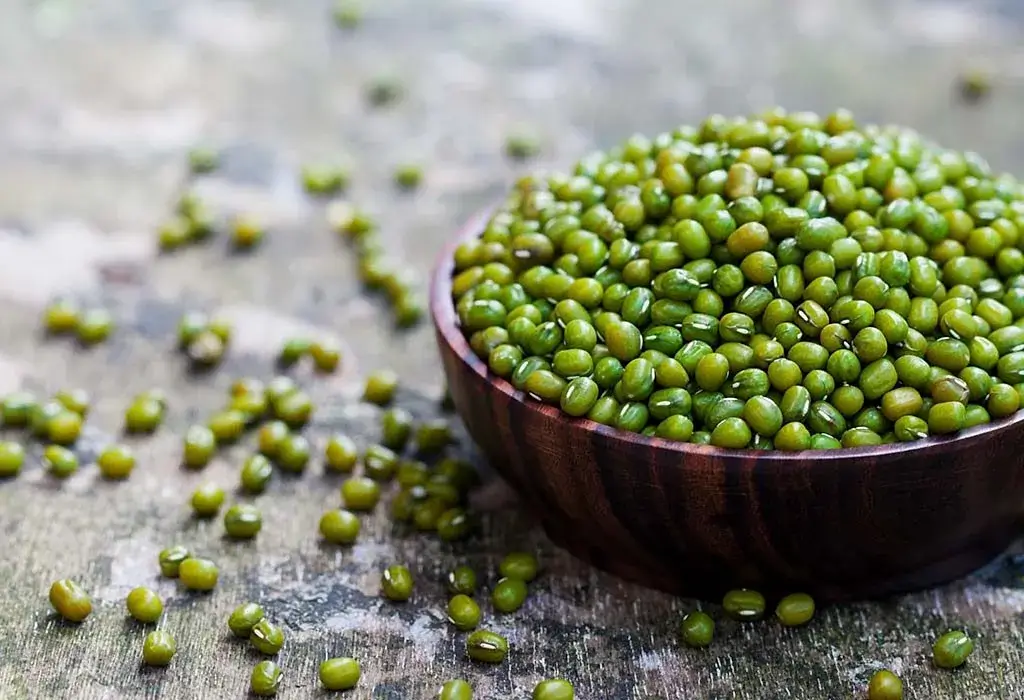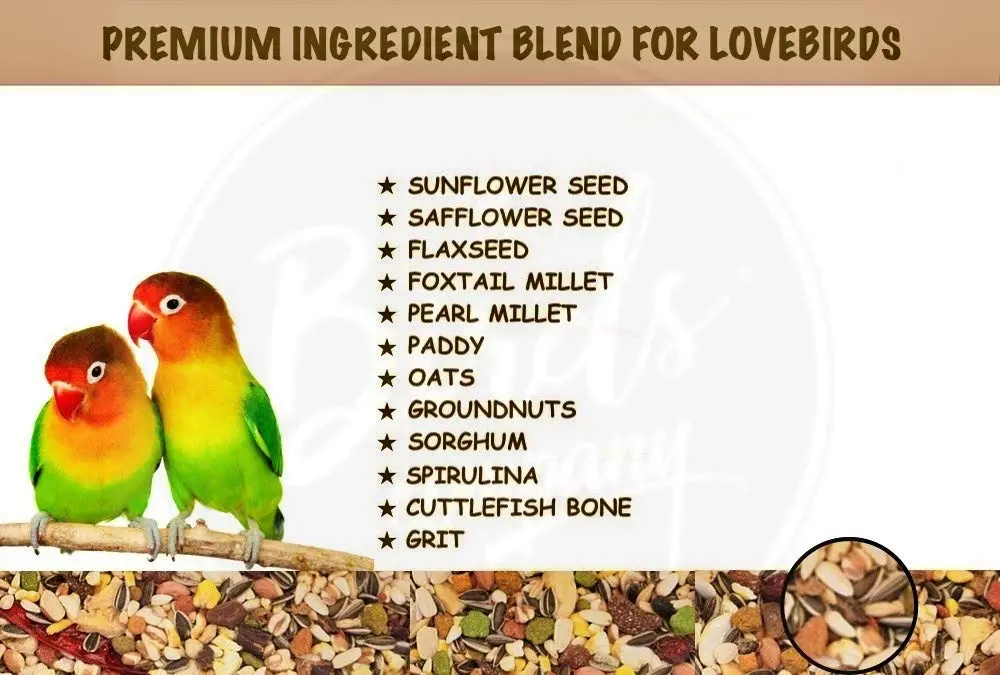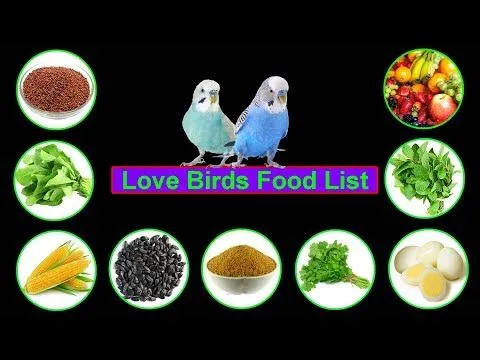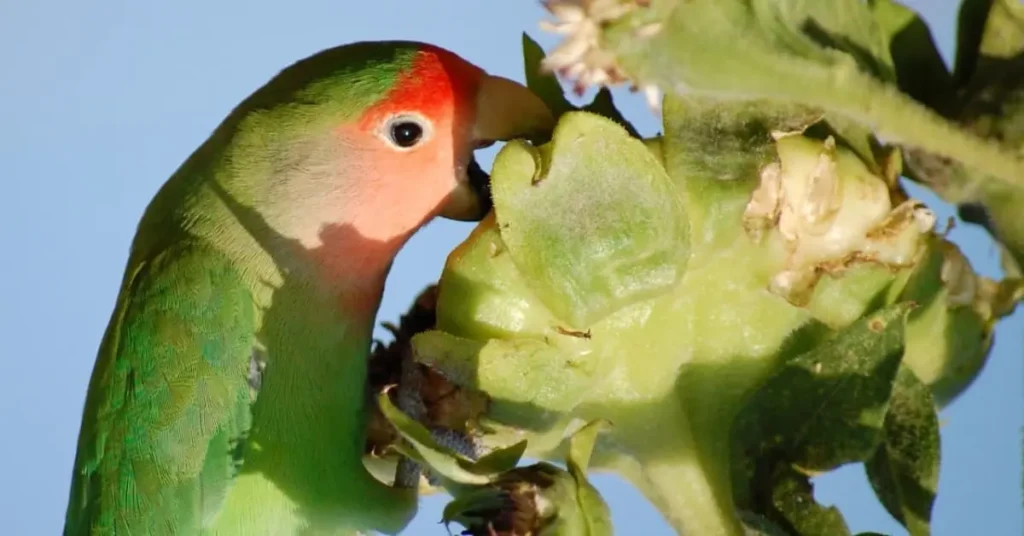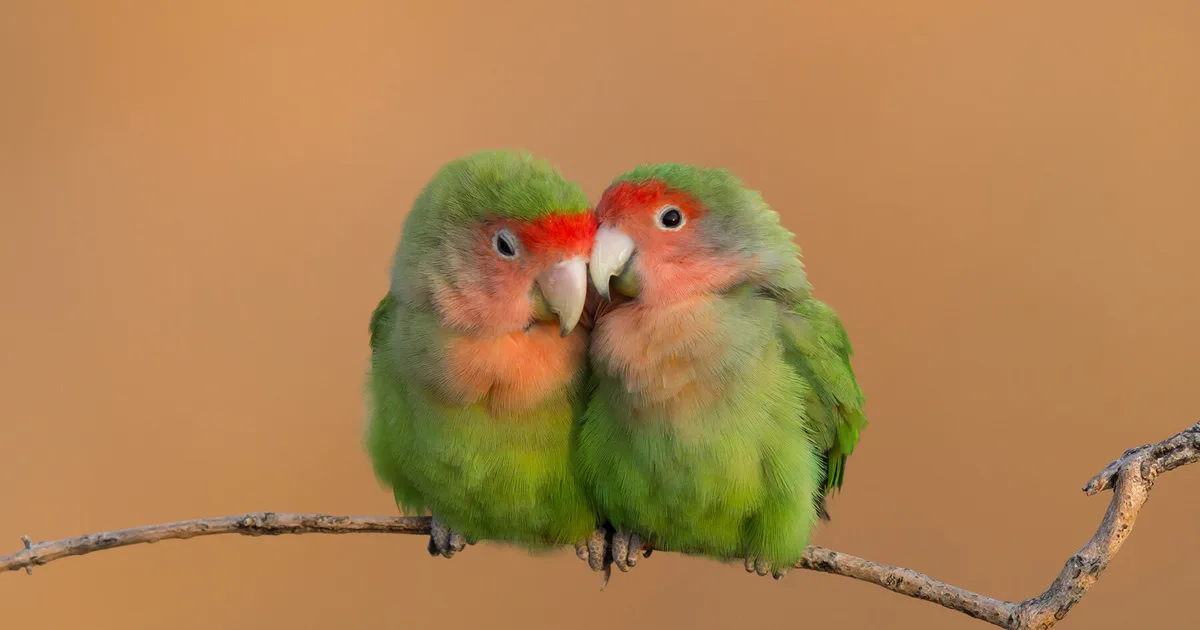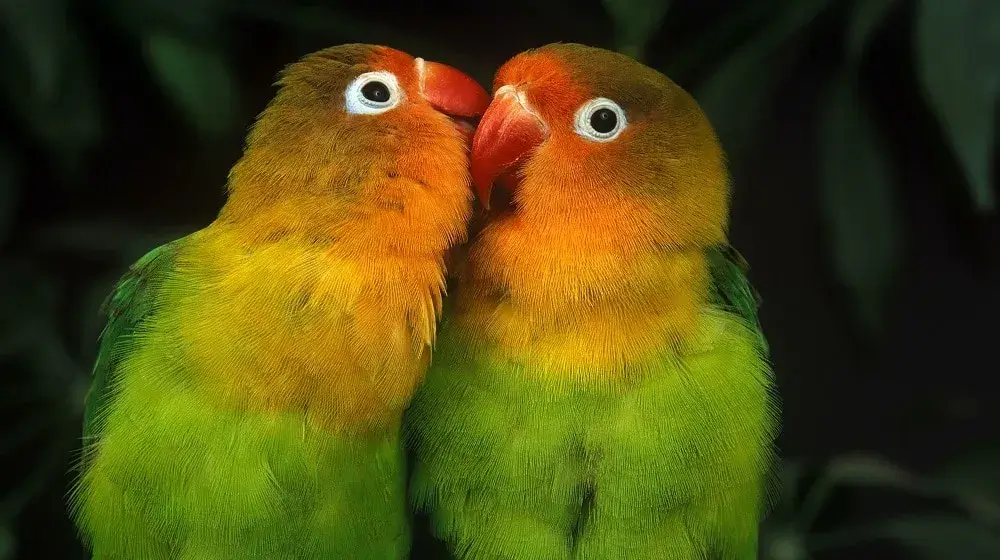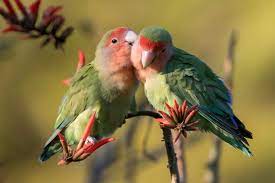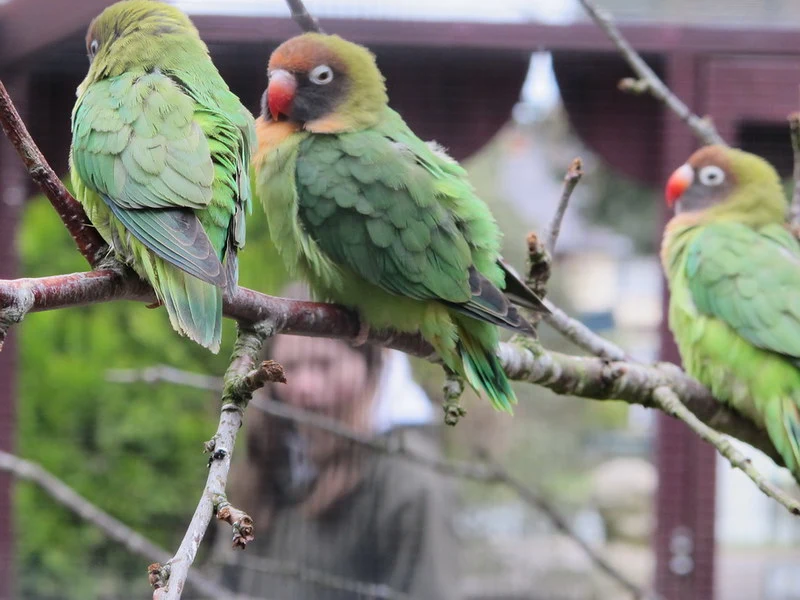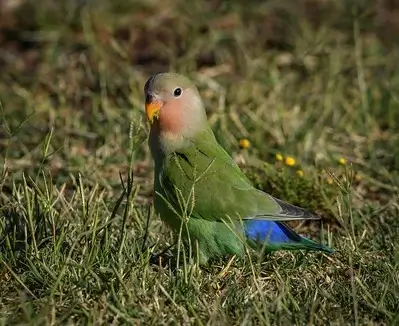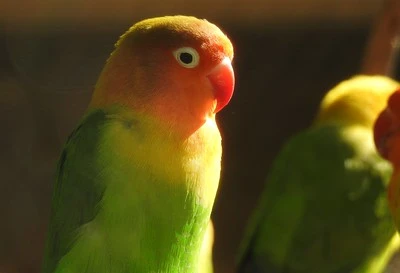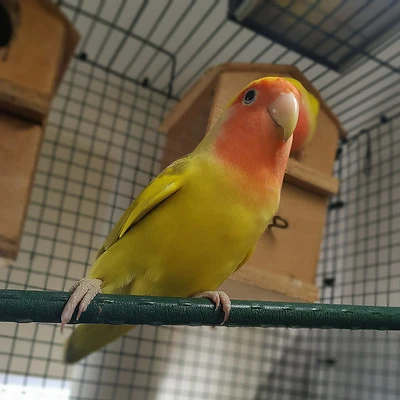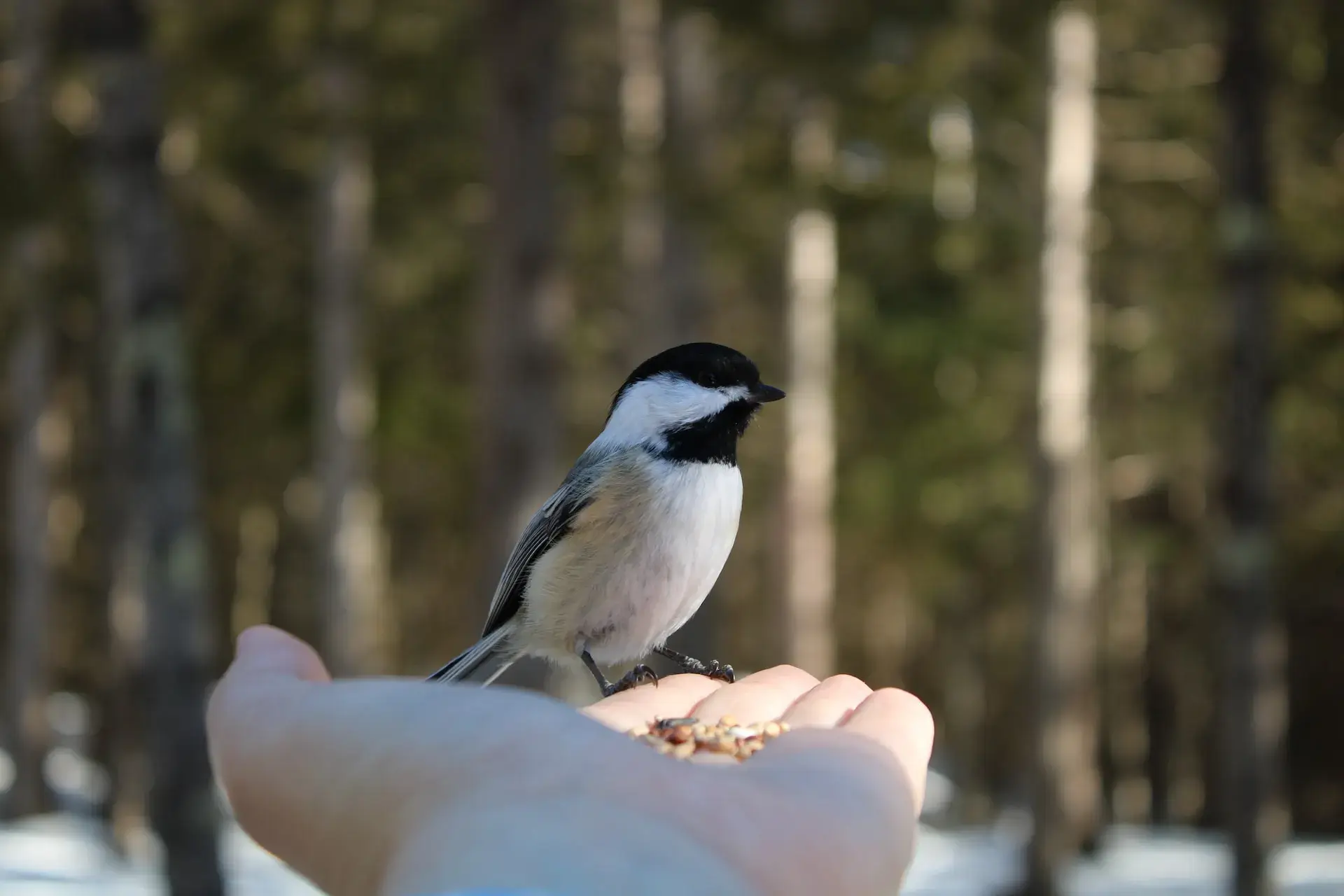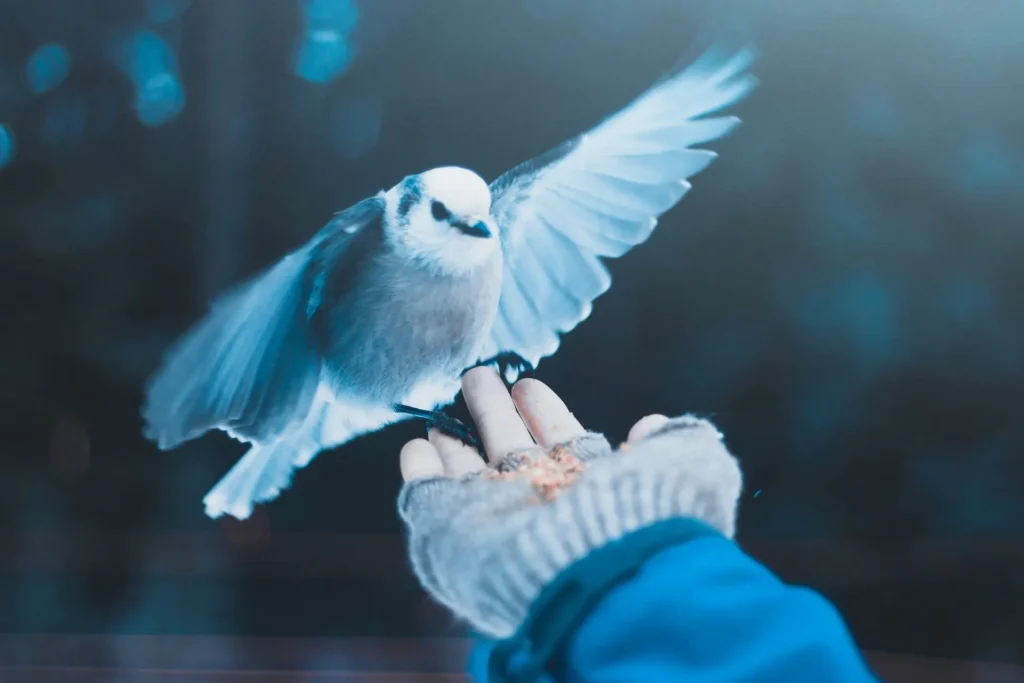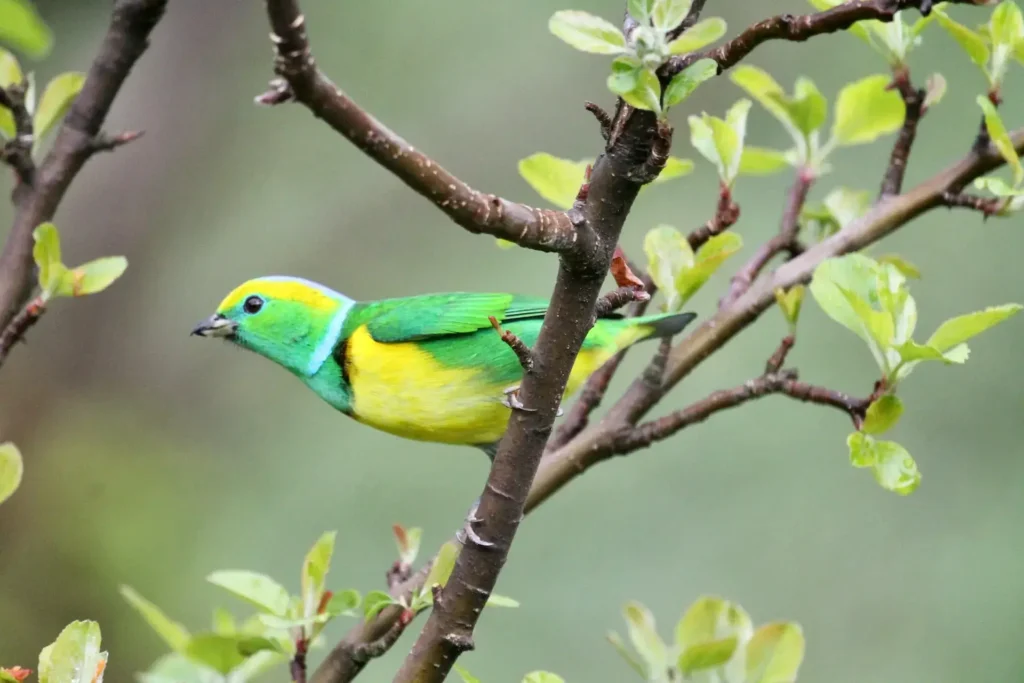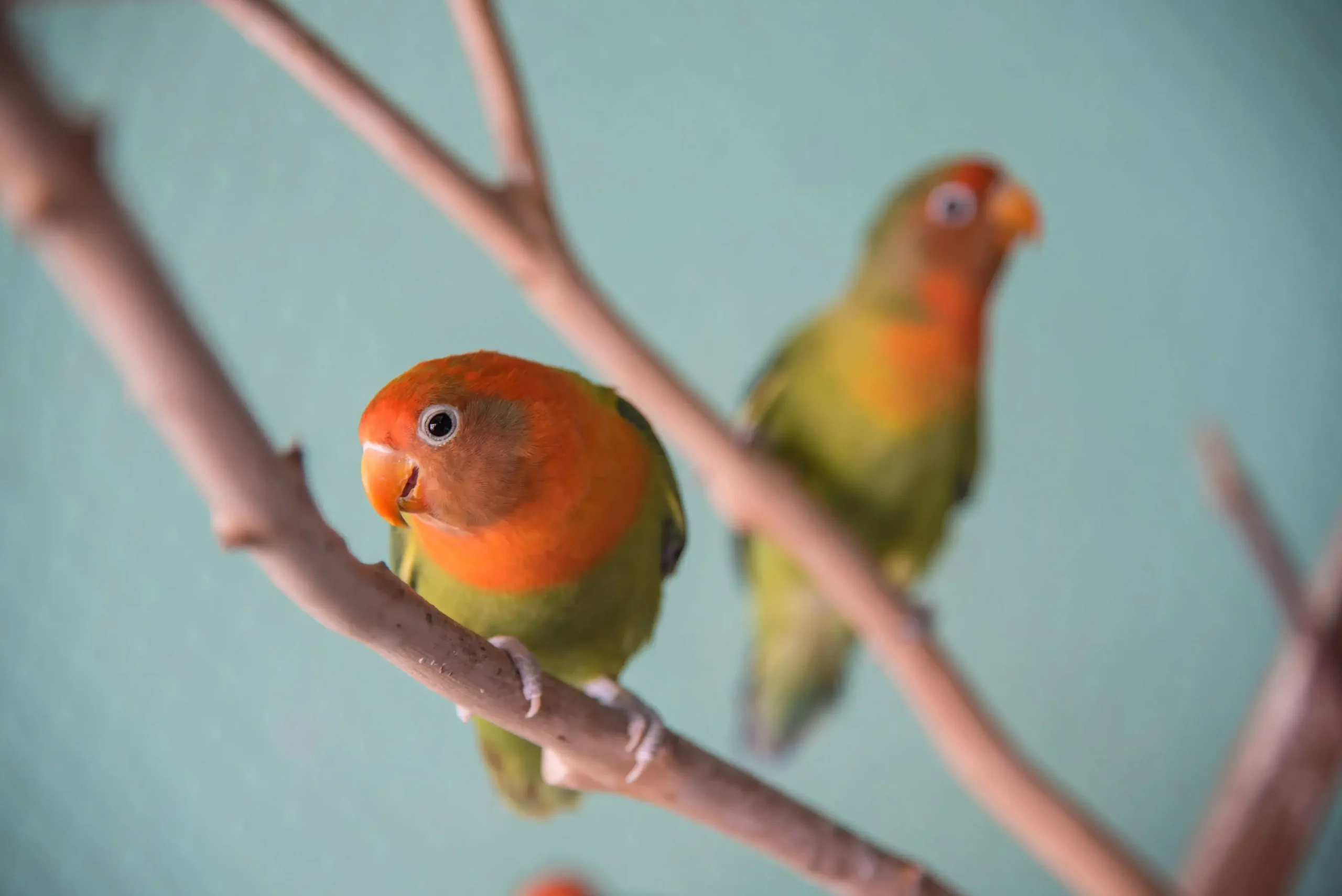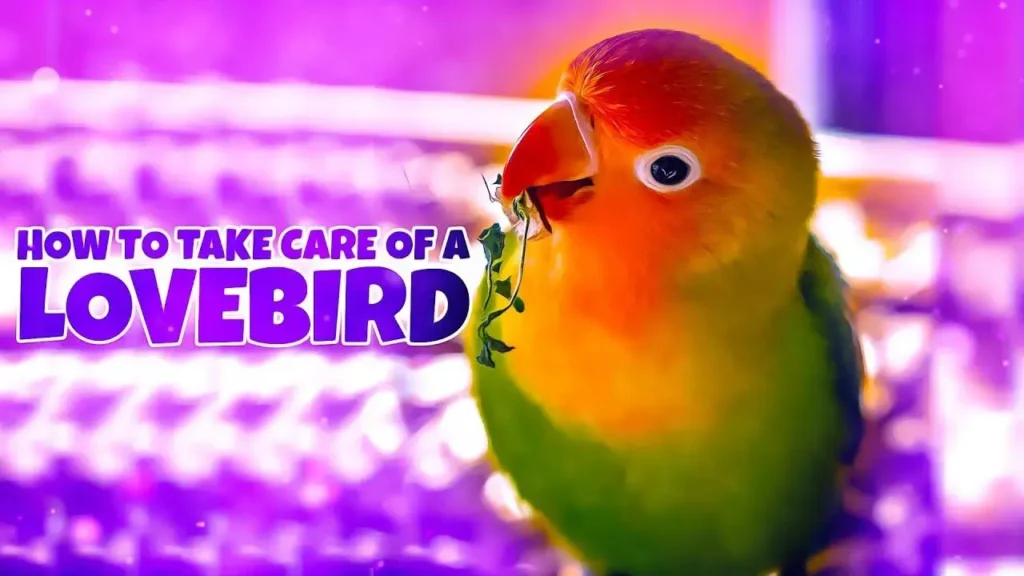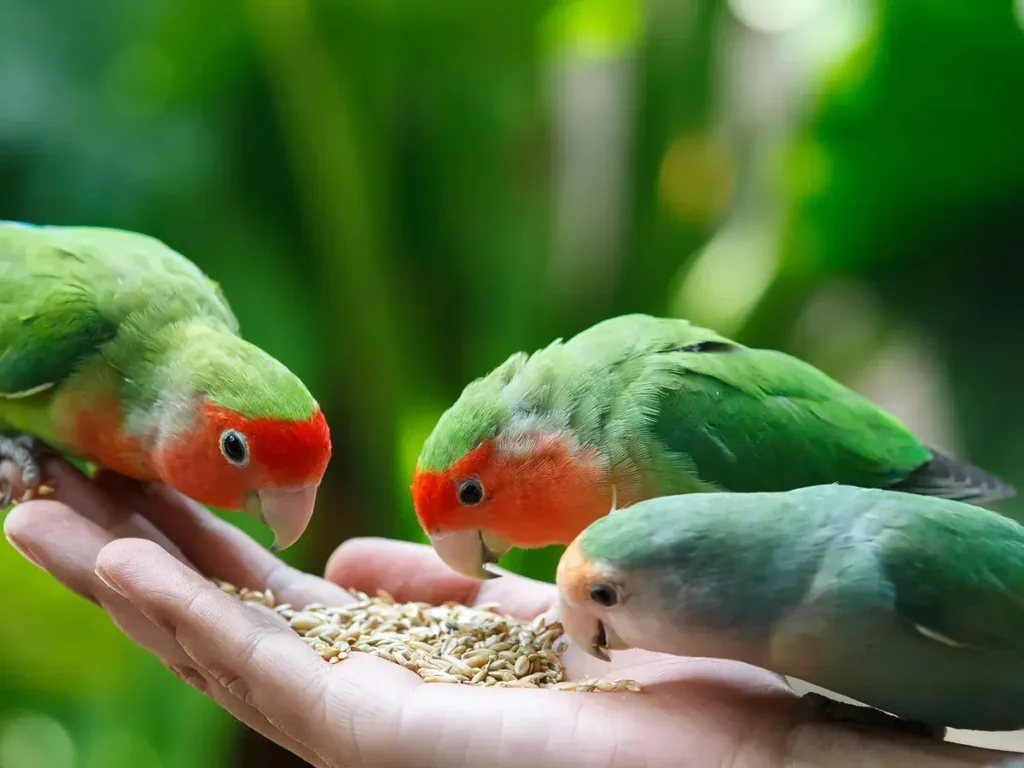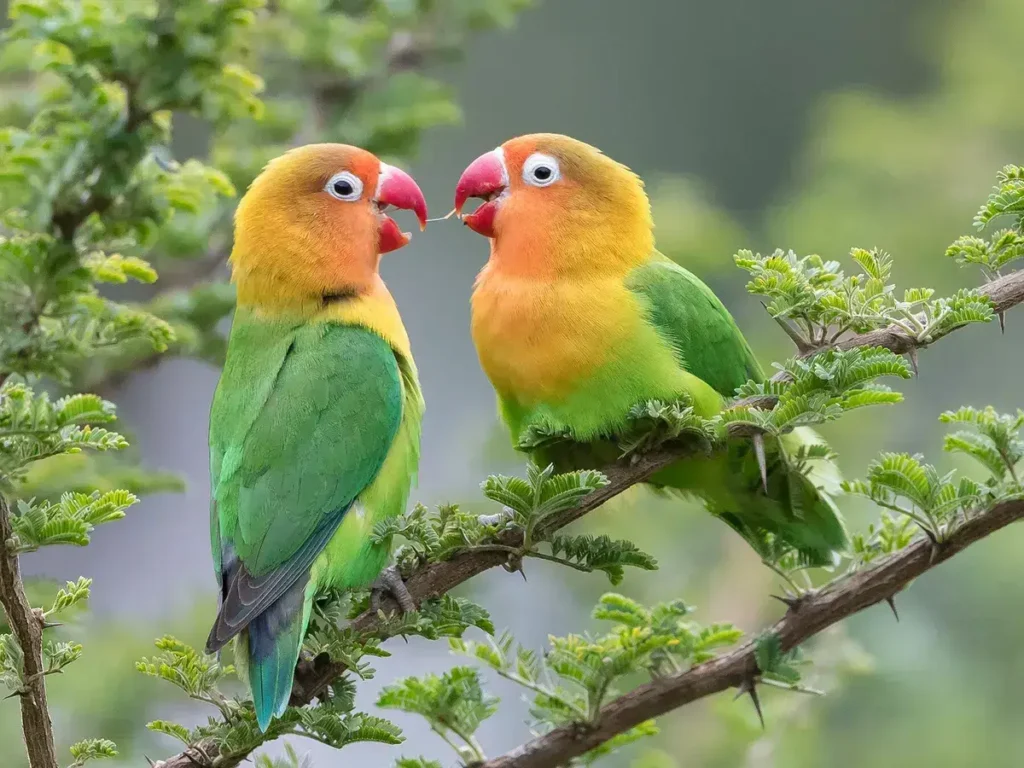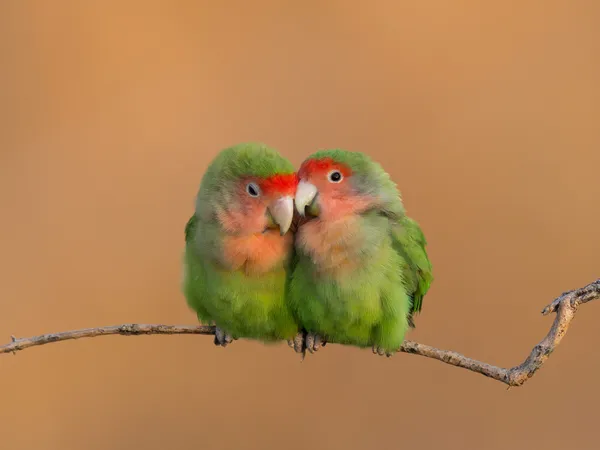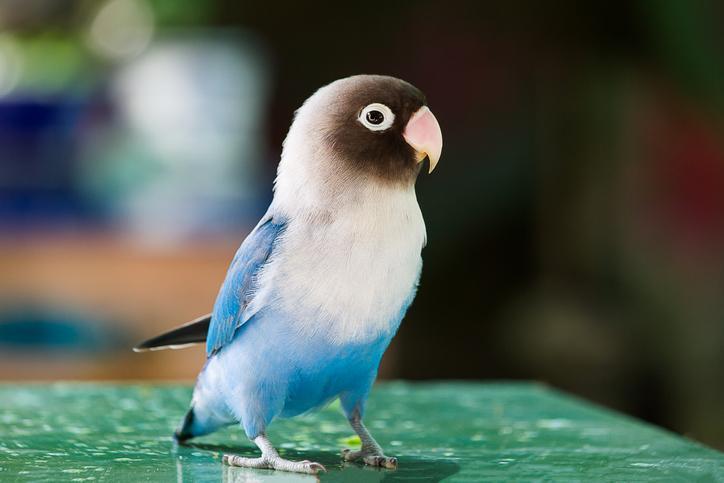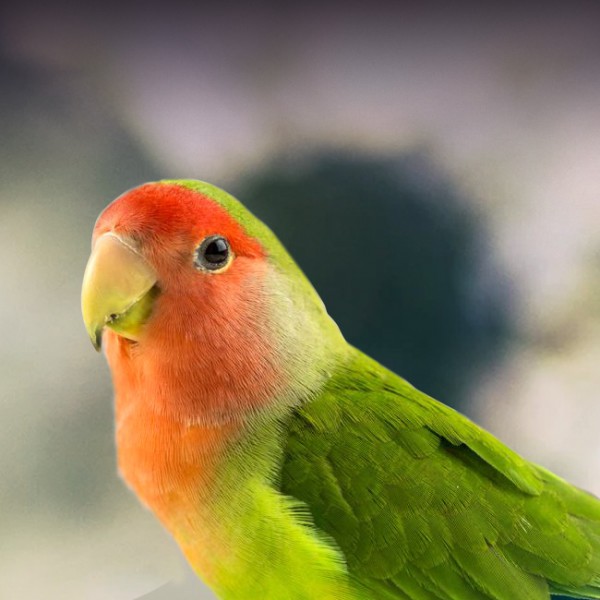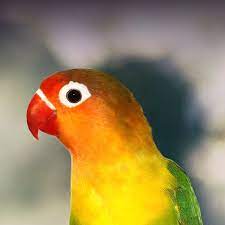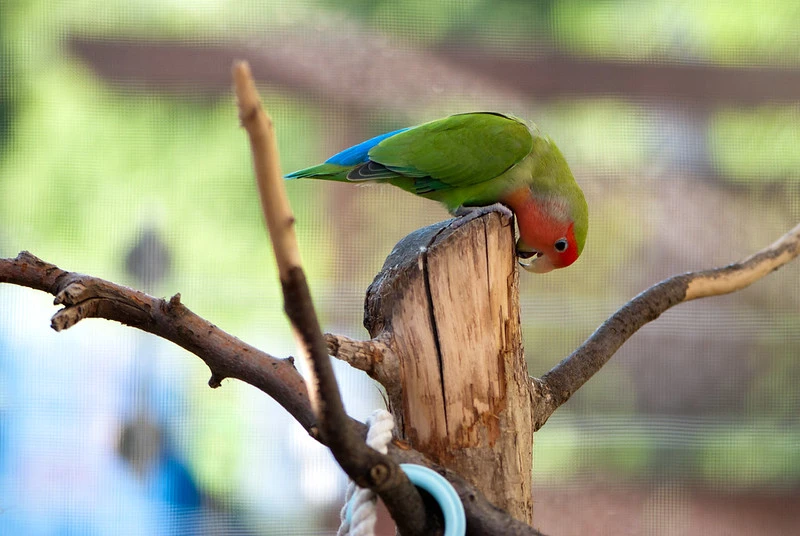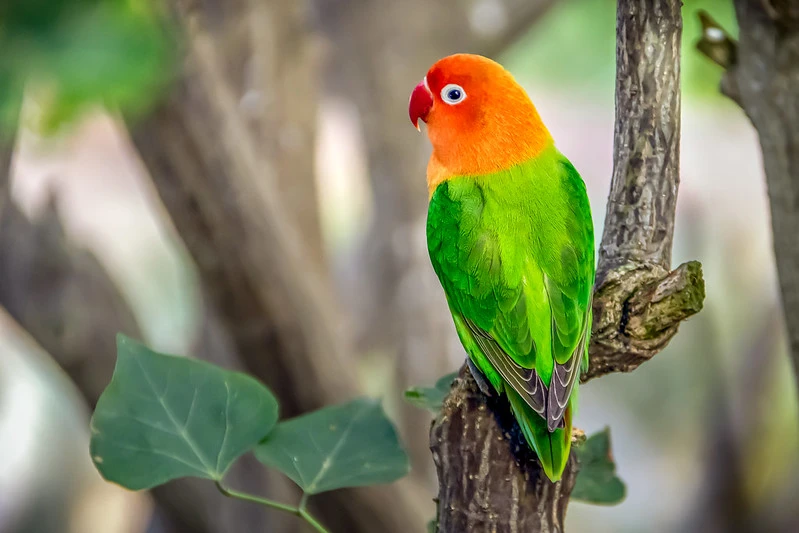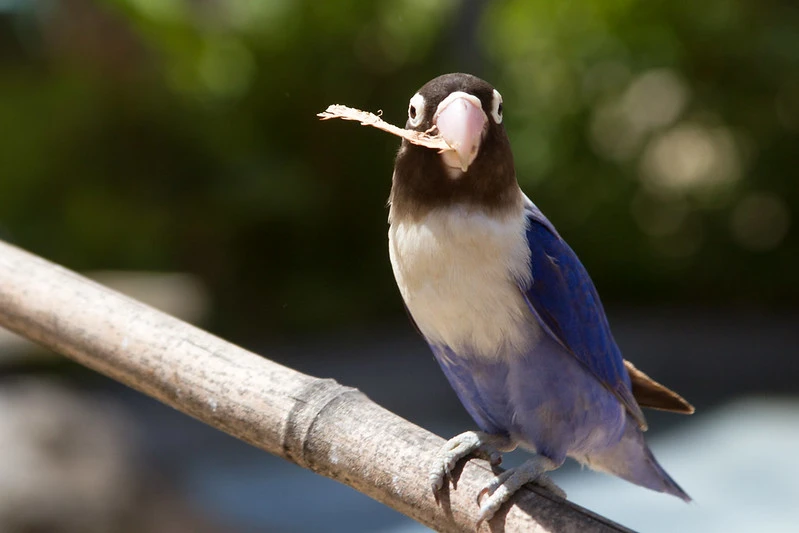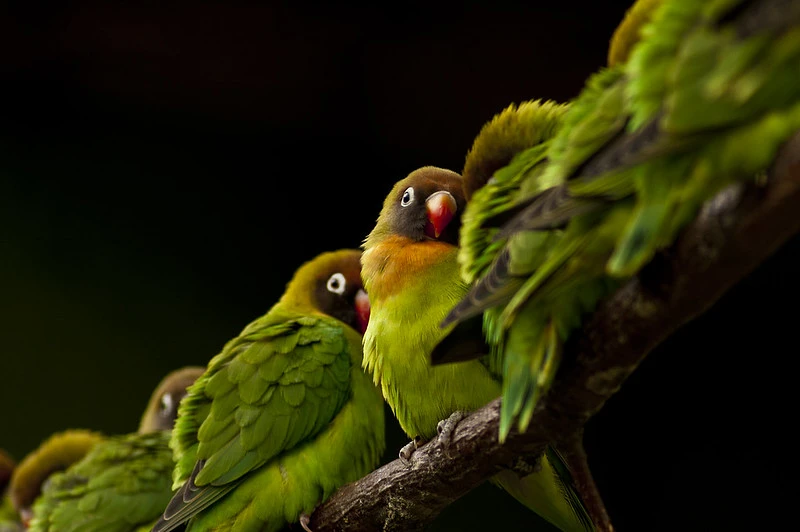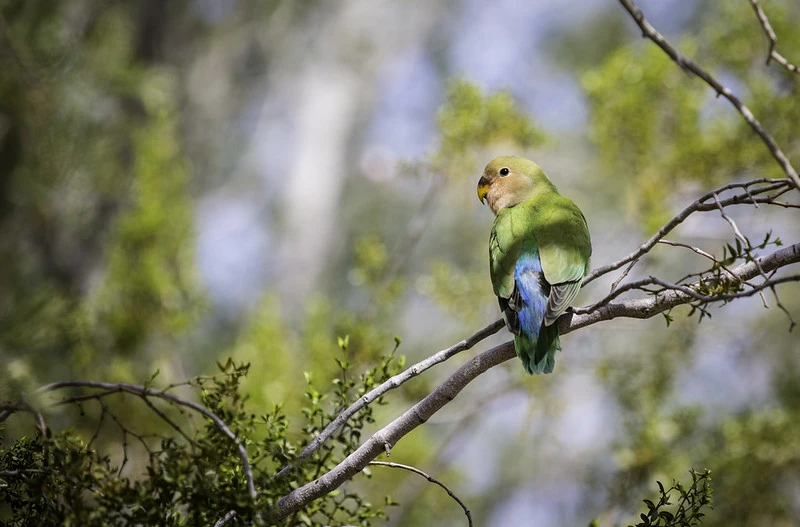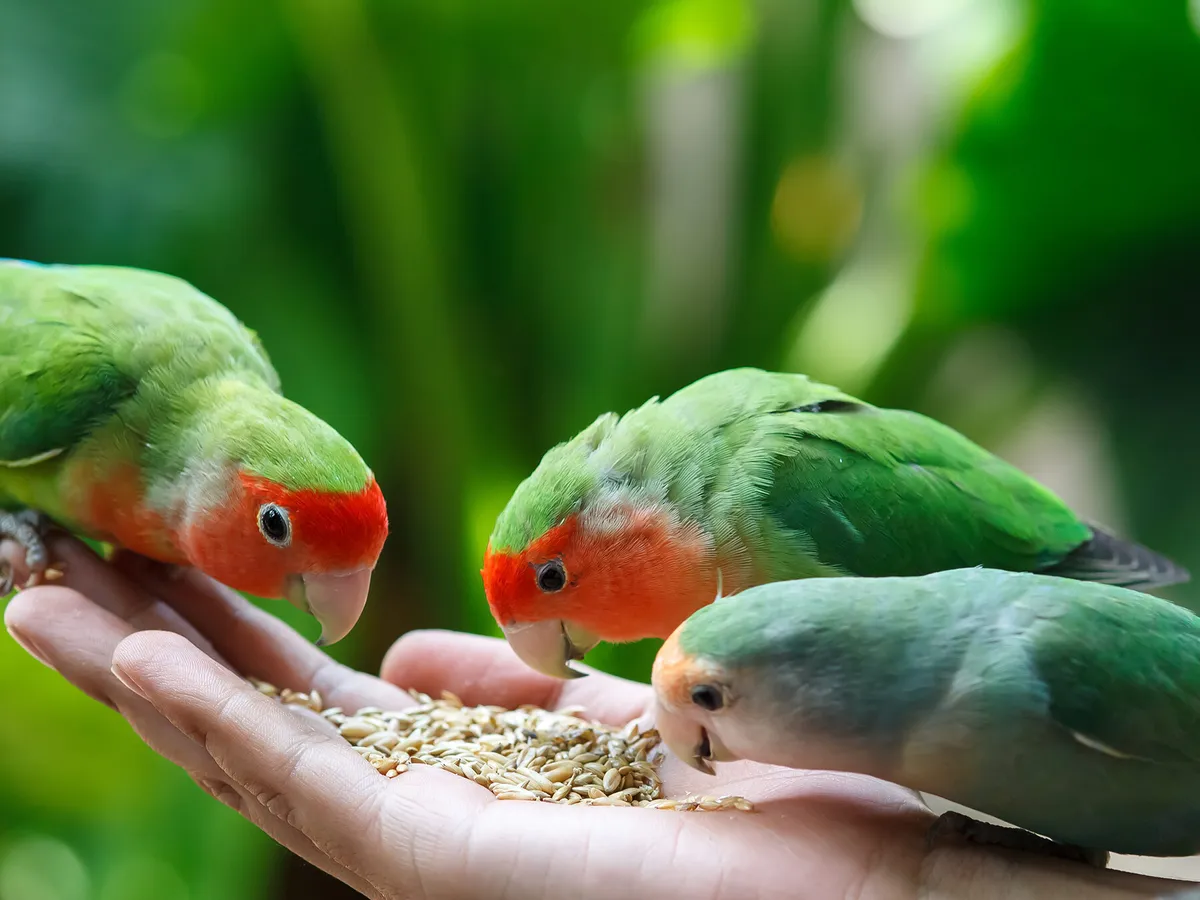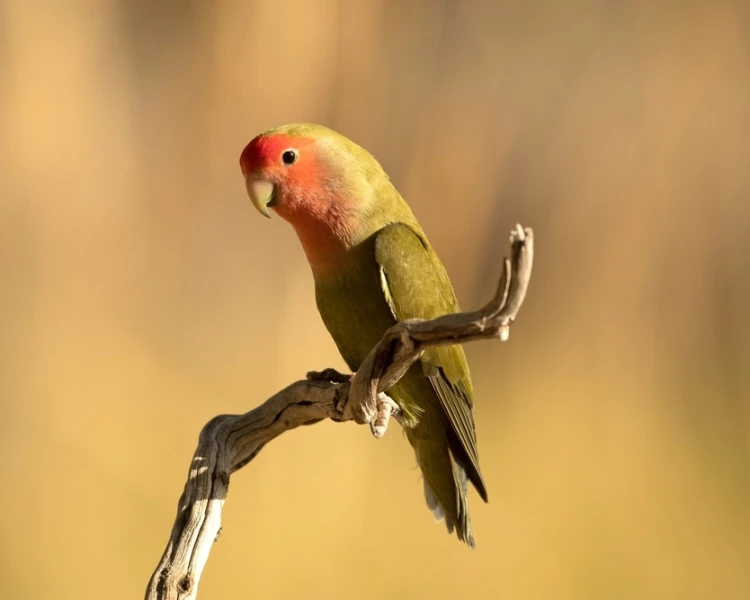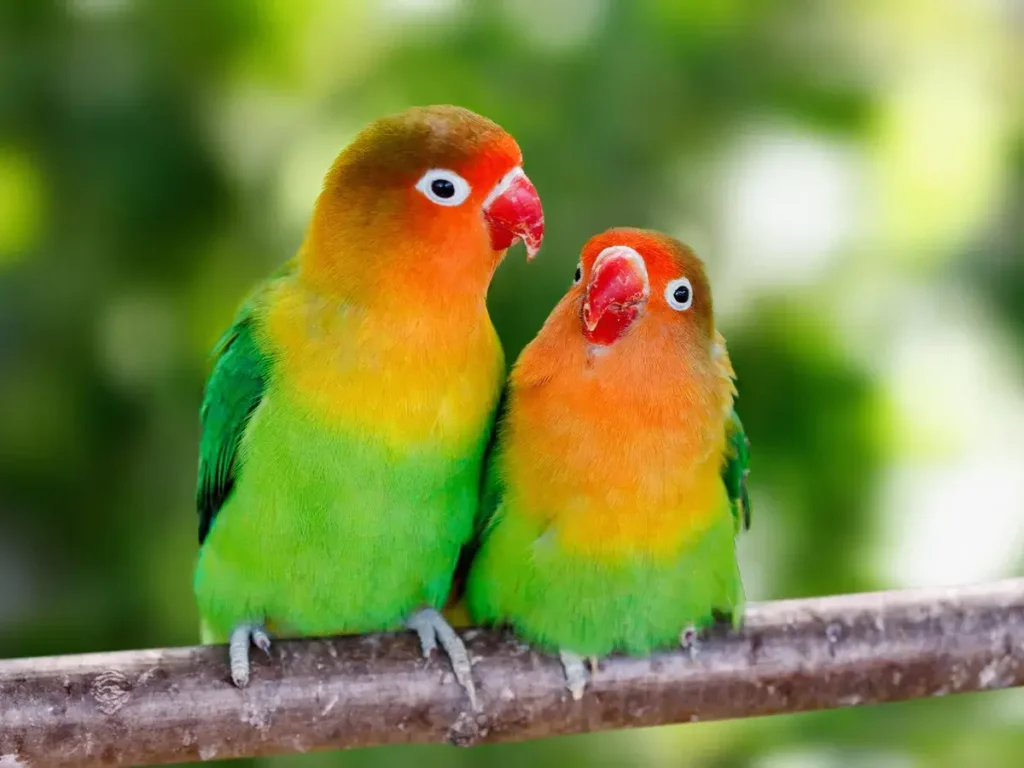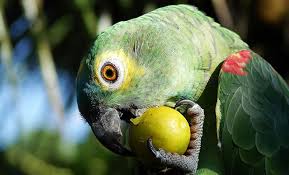Curious about how much do Lovebirds costs? Explore expenses, from initial purchase to ongoing care. Get budgeting insights today!
Introduction
Welcome to the captivating world of lovebirds, where the allure of these enchanting parrots beckons to pet enthusiasts and bird lovers alike. In this comprehensive guide, we will embark on a journey to answer a common and critical question in the world of pet ownership: how much do Lovebirds cost?
The Fascinating World of Lovebirds
Lovebirds, scientifically known as Agapornis, are small parrots known for their affectionate nature, vibrant plumage, and charming personalities. These diminutive avian companions have endeared themselves to bird enthusiasts worldwide, with their playful antics and endearing behaviors.
A Brief Overview of Lovebirds
Lovebirds are native to the African continent, where they inhabit regions ranging from the tropical forests of West Africa to the arid landscapes of East Africa. Their name is derived from the affectionate bonds they form, often characterized by constant preening, cuddling, and mutual grooming.
The Popularity of Lovebirds
Over the years, lovebirds have found their way into the homes and hearts of countless individuals. Their petite size and captivating colors make them highly sought-after pets, and their reputation for forming strong bonds with their owners only adds to their charm.
How Much Do Lovebirds Cost? The Importance of Knowing
While lovebirds may capture our affection with their endearing qualities, it is essential to recognize that responsible pet ownership entails more than just affection. Understanding the financial aspects of lovebird ownership is crucial. This is where the question, “How Much Do Lovebirds Cost?” comes into play.
Responsible Pet Ownership
Owning a pet, whether it’s a lovebird or any other animal, is a significant commitment that extends beyond cuddles and playtime. Responsible pet ownership involves providing proper care, nourishment, and shelter, as well as addressing any unexpected expenses that may arise.
Financial Planning
By gaining insights into the costs associated with lovebirds, potential owners can make informed decisions. Knowing what to expect financially is an integral part of the journey, ensuring the well-being and happiness of both the lovebird and its human companion.
A Comprehensive Guide
In the following chapters, we will delve into the intricacies of lovebird costs. We’ll explore the factors that affect their prices, examine price ranges from various sources, compare lovebird costs to those of other parrot species, and answer frequently asked questions about lovebird expenses.
Empowering Pet Enthusiasts
Our aim is to empower pet enthusiasts and potential lovebird owners with the knowledge needed to make informed decisions about bringing these charming birds into their homes. Whether you’re a seasoned pet owner or new to the world of avian companions, this guide will serve as a valuable resource for understanding the costs associated with lovebird ownership.
So, without further ado, let’s embark on this exciting journey and uncover the world of lovebird costs together.
Lovebird Species and Varieties
When it comes to understanding the world of lovebirds and their costs, delving into the fascinating realm of their species and varieties is essential. This chapter explores the diverse world of lovebirds, from their scientific classifications to the unique varieties that captivate bird enthusiasts.
Understanding Lovebird Species
Lovebirds are not a singular species but a group of small parrots belonging to the Agapornis genus. To appreciate their varying characteristics and costs, let’s first take a closer look at some of the most common lovebird species:
The Peach-Faced Lovebird (Agapornis roseicollis)
Peach-faced lovebirds are renowned for their vibrant plumage and their passionate displays of affection towards their mates. They are native to arid regions of southwestern Africa and have become beloved pets globally.
The Masked Lovebird (Agapornis personatus)
These charming birds earned their name due to the striking black mask-like markings on their faces. Masked lovebirds originate from parts of Africa, and they are known for their engaging personalities.
The Fischer’s Lovebird (Agapornis fischeri)
Named after the German explorer Gustav Fischer, these lovebirds are native to a limited range in Tanzania. They are characterized by their distinctive green plumage and playful behaviors.
The Nyasa Lovebird (Agapornis lilianae)
Endemic to the Nyasa region in Africa, these lovebirds exhibit lovely shades of green, blue, and yellow. Their gentle disposition and captivating colors make them a favorite among avian enthusiasts.
Each species comes with its own unique set of characteristics, and these differences can influence their costs. Lovebird enthusiasts often find themselves drawn to a particular species based on their individual preferences.
Exploring Unique Varieties
Within each lovebird species, there are distinct color mutations that give rise to a wide array of visually captivating varieties. Let’s delve into this colorful aspect of lovebirds:
The Lutino Lovebird
Lutino lovebirds are known for their striking yellow plumage and bright orange-red faces. These vibrant birds exude a sunny charm that many find irresistible.
The Pied Lovebird
Pied lovebirds have a unique pied (patchwork) pattern, combining various colors in a visually appealing mosaic. Their appearance is both lively and distinctive.
The Cinnamon Lovebird
Cinnamon lovebirds exhibit a warm, cinnamon-like hue in their plumage. Their earthy tones create an endearing and cozy appearance.
The Albino Lovebird
Albino lovebirds are entirely white, with red eyes, which adds a touch of mystique to their elegant and pristine look.
Varieties like these can vary in price, with rarer mutations often being more expensive due to their uniqueness and visual appeal.
The Connection Between Variety and Price
Understanding the connection between lovebird varieties and their respective prices is crucial for prospective owners. While the species sets the baseline for a lovebird’s general characteristics, it’s the varieties or mutations that can significantly impact their cost.
For example, a standard peach-faced lovebird might have a different price point than a lutino peach-faced lovebird due to the latter’s striking coloration. Likewise, a regular Fischer’s lovebird may differ in cost from a pied Fischer’s lovebird.
In this chapter, we’ve embarked on a journey into the captivating world of lovebird species and their unique varieties. This foundation will serve as a valuable reference point as we explore the various factors that affect lovebird prices in the subsequent chapters. Understanding the lovebirds themselves is just the beginning of comprehending the intricate world of lovebird costs.
Factors Affecting Lovebird Prices
As we delve deeper into the fascinating world of lovebird costs, it’s crucial to understand the various factors that can significantly influence the price you’ll pay for one of these captivating birds. Lovebirds, like any pet, are an investment in companionship and joy, but it’s essential to be aware of the key elements that may impact their price.
The Role of Rarity
One of the primary determinants of lovebird prices is the rarity of the specific type or variety you’re interested in. Rare lovebirds, whether they are a unique species or an uncommon color mutation, often come with a higher price tag. The rarity factor can make them more appealing to collectors and enthusiasts.
Consider, for example, the eye-catching Lutino Lovebird with its striking yellow plumage. These lovebirds tend to be pricier than their more common counterparts. Similarly, the visually captivating Pied Lovebird, with its mosaic-like coloring, is considered rare and, as a result, comes with a higher cost.
Breeder Reputation and Expertise
The reputation and expertise of the breeder play a significant role in the cost of lovebirds. Reputable breeders with a history of responsible breeding practices, well-maintained aviaries, and a focus on the bird’s health and well-being may charge more for their lovebirds. These breeders are often associated with better-quality pets.
When seeking a lovebird, it’s advisable to research and find breeders with strong reputations. You may pay more upfront, but the assurance of a healthy and well-socialized lovebird can be well worth the investment.
The Impact of Color Mutations
As we explored in the previous chapter, lovebirds come in a dazzling array of color mutations, each with its unique charm. The coloration of a lovebird can have a notable impact on its price. Rare or visually striking color mutations are often more expensive.
For instance, the Albino Lovebird, with its pristine white feathers and red eyes, falls into the category of rare color mutations, making it more costly. Color mutations not only enhance the visual appeal of the birds but can also reflect the effort and expertise of the breeder.
Hand-Raised vs. Parent-Fed Lovebirds
Another consideration that can affect the price of lovebirds is their upbringing. Hand-raised lovebirds, those that have been socialized and tamed by human caregivers, are typically more expensive than parent-fed lovebirds. Hand-raised lovebirds tend to be more comfortable around people, making them ideal for those seeking affectionate companions.
Parent-fed lovebirds are reared by their biological parents and may require more time and patience to become accustomed to human interaction. The price difference is often a reflection of the additional care and time that goes into hand-raising these birds.
Adoption: A Cost-Effective Option
While we’ve explored factors that can make lovebirds more expensive, it’s essential to highlight a cost-effective alternative: adoption. Many lovebirds in need of loving homes are available for adoption from rescue organizations and shelters. These birds are often seeking caring owners, and adoption can be a more economical choice.
In this chapter, we’ve uncovered the key factors that can influence the prices of lovebirds, from the role of rarity and breeder reputation to the impact of color mutations and upbringing. Understanding these variables will empower you to make informed decisions as you navigate the world of lovebird ownership.
The Lovebird Price Range
Now that we’ve delved into the factors affecting lovebird prices, let’s turn our attention to the actual price range you can expect when considering these charming parrots. Lovebirds come in a spectrum of species and varieties, and their prices can vary significantly. Understanding these price ranges is crucial in making an informed decision as a potential lovebird owner.
Overview of Lovebird Price Ranges
Lovebirds are available at a wide range of price points, which primarily depend on the specific species or variety, as well as factors discussed in the previous chapter. To give you a sense of the pricing landscape, let’s explore the general price categories:
- Affordable Lovebirds: These typically include common species and varieties that are more readily available. You can find lovebirds in this category priced between $20 to $50.
- Mid-Range Lovebirds: Lovebirds in this category often belong to popular species and may have distinct color mutations. Prices range from $50 to $150.
- Premium Lovebirds: Premium lovebirds encompass the rarer species and unique, visually striking color mutations. These birds can be priced anywhere from $150 to $400 or more.
It’s important to note that while these categories provide a broad overview, the actual prices may vary depending on your location, the breeder’s reputation, and other specific factors.
Insights from Various Sources
When it comes to buying lovebirds, it’s essential to gather information from various sources to ensure you’re making an informed decision. Here, we’ll explore insights from a range of sources that can help you understand the prevailing prices:
Bird Feeder Hub
Bird Feeder Hub is a valuable resource for bird enthusiasts. The prices for lovebirds can range from $20 for common varieties to over $400 for rare species or unique color mutations. Bird Feeder Hub provides in-depth information on what to expect when purchasing lovebirds.
AZ Animals
AZ Animals offers insights into pet animals, including lovebirds. The average price for a lovebird in 2023 ranges from $50 to $150, but rare color mutations can command prices of up to $200.
Thayer Birding
Thayer Birding presents lovebird adoption as an option, with prices ranging from $20 to $100. Adopting a lovebird may be a more cost-effective choice, and Thayer Birding provides guidance on adoption costs.
HowMuchIsIt.org
HowMuchIsIt.org provides a comprehensive guide to lovebird costs. On average, plan on spending anywhere from $50 to as much as $250 for a lovebird, depending on the species and variety.
Pet Keen
Pet Keen offers valuable information on lovebird costs, indicating that prices can range from $25 to more than $150 from a breeder. Certain lovebird species can command prices as high as $150.
petrestart.com
Petrestart.com highlights lovebirds’ pricing, mentioning that these birds can cost anywhere from $25 to over $150. Certain species may be priced at around $1,500, emphasizing the importance of knowing the specific type of lovebird you desire.
All About Parrots
All About Parrots provides insights into lovebird pricing. The initial outlay for a lovebird can range from $100 to $1,500, depending on the type you desire. This source gives you a clear picture of what to expect.
tamefeathers.com
Tamefeathers.com focuses on lovebird pricing, particularly at Petco. It notes that these birds can retail for anywhere between $100 and $300, with certain rare breeds costing more.
Chipper Birds
Chipper Birds offers information on the price of lovebirds, emphasizing that a pair of Love Birds can range from $129 to $219. Rare breeds may cost $299 or more. This source helps you understand the cost of obtaining lovebirds.
Parrot Website
Parrot’s Website provides valuable information on the costs associated with lovebirds. They note that a standard vet checkup for a parrot can range from $50 to $200, depending on the services offered and location.
With insights from these sources, you can better grasp the lovebird pricing landscape, helping you make an informed decision when adding these delightful birds to your life.
Lovebirds vs. Other Parrot Species
In this chapter, we embark on a comparative journey, exploring how lovebirds stack up against other parrot species in terms of costs. While lovebirds are known for their vibrant personalities and unique characteristics, prospective pet owners often wonder if they are an affordable choice. To address this, we’ll delve into how lovebird prices compare to those of other parrot species and uncover the influence of rare color mutations.
A Cost Comparison
Lovebirds
Lovebirds, with their endearing size and affectionate nature, are often perceived as a budget-friendly option for those looking to enter the world of pet birds. The average price range for lovebirds, as we explored in the previous chapter, spans from $20 for common varieties to over $400 for rare species and striking color mutations. This affordability makes lovebirds an enticing choice for avian enthusiasts.
Other Parrot Species
However, when we broaden our scope to other parrot species, we encounter a more diverse pricing landscape. Larger parrot species, such as African Grey Parrots, Amazon Parrots, or Cockatoos, tend to come with heftier price tags. These majestic birds, celebrated for their intelligence and unique characteristics, can be significantly more expensive, ranging from several hundred to several thousand dollars.
The cost of a parrot depends on various factors, including the species, age, and rarity. It’s essential to research and understand the specific needs of larger parrot species, including space, care, and companionship, before committing to ownership.
The Influence of Rare Color Mutations
Color mutations are a fascinating aspect of the parrot world. These genetic variations result in unique and visually striking plumage. For lovebirds and other parrot species, rare color mutations can significantly impact their prices.
Lovebirds
Lovebirds, known for their vibrant and diverse colorations, offer various mutations that appeal to collectors and enthusiasts. Rare color mutations, such as Lutino, Albino, or Pied varieties, can command higher prices. These visually distinctive lovebirds can range from $100 to over $200 or more.
Other Parrot Species
Larger parrot species also exhibit unique color mutations, with some being exceptionally rare and sought after. For instance, a rare color mutation in an African Grey Parrot or a Macaw can escalate the bird’s price significantly. In some cases, these mutations can double or triple the standard cost of the species.
It’s important to note that rare color mutations are not only visually captivating but also a testament to the genetic diversity within the parrot world. If you’re considering a pet based on its coloration, be prepared for potential price variations.
In conclusion, when it comes to comparing lovebirds to other parrot species, lovebirds often emerge as a more budget-friendly choice. Their affordability, combined with their charming personalities, makes them an appealing option for pet bird enthusiasts. However, each parrot species, including lovebirds, brings its unique attributes and considerations, so it’s crucial to select a pet that aligns with your preferences and lifestyle.
FAQs
How Much Do Lovebirds Cost?
In this chapter, we’ll delve into the frequently asked questions (FAQs) surrounding the costs of lovebirds. For those considering these delightful birds as pets, it’s essential to address common queries related to their expenses, budgeting, and the factors that make lovebirds unique in the avian world.
What Makes Lovebirds Expensive?
Lovebirds can vary in price depending on several factors, such as species, color mutations, and breeder reputation. While some lovebirds are reasonably priced, others may be more expensive. Here’s a closer look at what can make lovebirds expensive:
- Rare Species: Rare lovebird species or subspecies are often pricier due to their limited availability.
- Color Mutations: Unique color mutations like Lutino, Albino, or Pied can increase the price of lovebirds.
- Hand-Raised Birds: Hand-raised lovebirds, which are more socialized and easier to tame, tend to be costlier than parent-fed ones.
- Breeder Expertise: Lovebirds from reputable breeders, known for their experience and high-quality care, may come at a premium.
Are Lovebirds Affordable Pets?
Generally, lovebirds are considered affordable pets within the realm of parrots. Their initial purchase price can range from $20 for common varieties to over $400 for rare species. Additionally, the ongoing expenses for food, toys, and healthcare are manageable for most pet owners. When compared to larger parrot species like Macaws or Cockatoos, lovebirds are more budget-friendly, making them an attractive choice for many bird enthusiasts.
Setting a Budget for Your Lovebird
Setting a budget for your lovebird is a smart approach to ensure responsible pet ownership. Consider the following expenses when establishing your budget:
- Initial Purchase: Allocate funds for buying your lovebird, which can range from $20 to $400 or more.
- Cage and Accessories: Invest in a suitable cage, perches, toys, and feeding dishes.
- Monthly Expenses: Budget for food, treats, and ongoing supplies.
- Veterinary Care: Be prepared for occasional vet visits and potential medical expenses.
Planning ahead and budgeting for your lovebird’s needs will help you provide the best care for your feathered friend.
Where to Find Affordable Lovebirds
If you’re looking for budget-friendly lovebirds, consider the following options:
- Local Aviaries or Bird Clubs: Local bird clubs and aviaries may offer lovebirds at reasonable prices.
- Rescue Organizations: Rescue organizations sometimes have lovebirds available for adoption, which can be a cost-effective way to bring a pet into your home.
- Online Classifieds: Websites and forums dedicated to pet birds often have listings from breeders and individuals selling lovebirds.
Always ensure that the birds you consider are healthy and well-cared for, regardless of where you choose to acquire your lovebird.
The Value of Rare Lovebirds
While rare lovebirds can be more expensive, they also hold a unique appeal for bird enthusiasts and collectors. Their scarcity and distinctive color mutations make them prized among avian aficionados. Whether you’re a devoted lovebird owner or a collector, rare lovebirds offer a special place in the world of pet birds.
In conclusion, understanding the costs and factors related to lovebirds is essential for making informed decisions as a potential lovebird owner. By addressing these FAQs, you’ll be well-prepared to embark on your journey of lovebird ownership, knowing the financial considerations and options available to you.
Conclusion
As we wrap up this comprehensive guide to Lovebird costs, it’s time to summarize the key factors and insights that will empower you to make informed decisions as a Lovebird owner. Let’s also explore some parting thoughts on the prices associated with these enchanting parrots.
Summarizing Lovebird Cost Factors
Throughout this guide, we’ve uncovered various factors that influence the costs of lovebirds. To recap, these include:
- Varieties and Species: Different lovebird species and varieties can vary significantly in price.
- Rarity: Rare species, subspecies, and unique color mutations tend to be more expensive.
- Breeder Reputation: The expertise and reputation of the breeder can impact the cost.
- Hand-Raised vs. Parent-Fed: Hand-raised lovebirds are typically pricier due to their socialization.
- Adoption: Choosing adoption can be a cost-effective option, especially if you’re open to providing a loving home for a rescued bird.
Understanding these factors will guide your choices and budget when it comes to lovebirds.
As a prospective or current lovebird owner, it’s crucial to approach your responsibilities with care. Here are some tips for making informed decisions:
- Research: Continue to educate yourself about lovebirds, their behavior, and their care requirements.
- Budgeting: Set a realistic budget for your lovebird, covering initial costs and ongoing expenses.
- Vet Care: Prioritize your lovebird’s health by scheduling regular check-ups with an avian veterinarian.
- Socialization: Spend quality time with your bird to build a strong bond and ensure their mental and emotional well-being.
- Safety: Bird-proof your home to create a safe environment for your lovebird to explore.
By staying informed and taking these measures, you’ll create a loving and safe home for your feathered friend.
Parting Thoughts on Lovebird Prices
In conclusion, lovebirds are not only captivating companions but also come at a reasonable cost in the world of pet birds. While some rare varieties may be on the expensive side, they offer a unique charm and appeal that’s hard to resist for bird enthusiasts and collectors.
Remember that the value of lovebirds goes far beyond their price tag. These small parrots are known for their affectionate nature, vibrant personalities, and the joy they bring to their owners’ lives. So, whether you’re seeking an affordable pet or a cherished collector’s item, lovebirds are sure to capture your heart.
Thank you for joining us on this journey to uncover “How Much Do Lovebirds Cost.” We hope this guide has been a valuable resource in your quest for understanding and embracing these delightful birds. May your lovebird journey be filled with joy, love, and feathered companionship.
